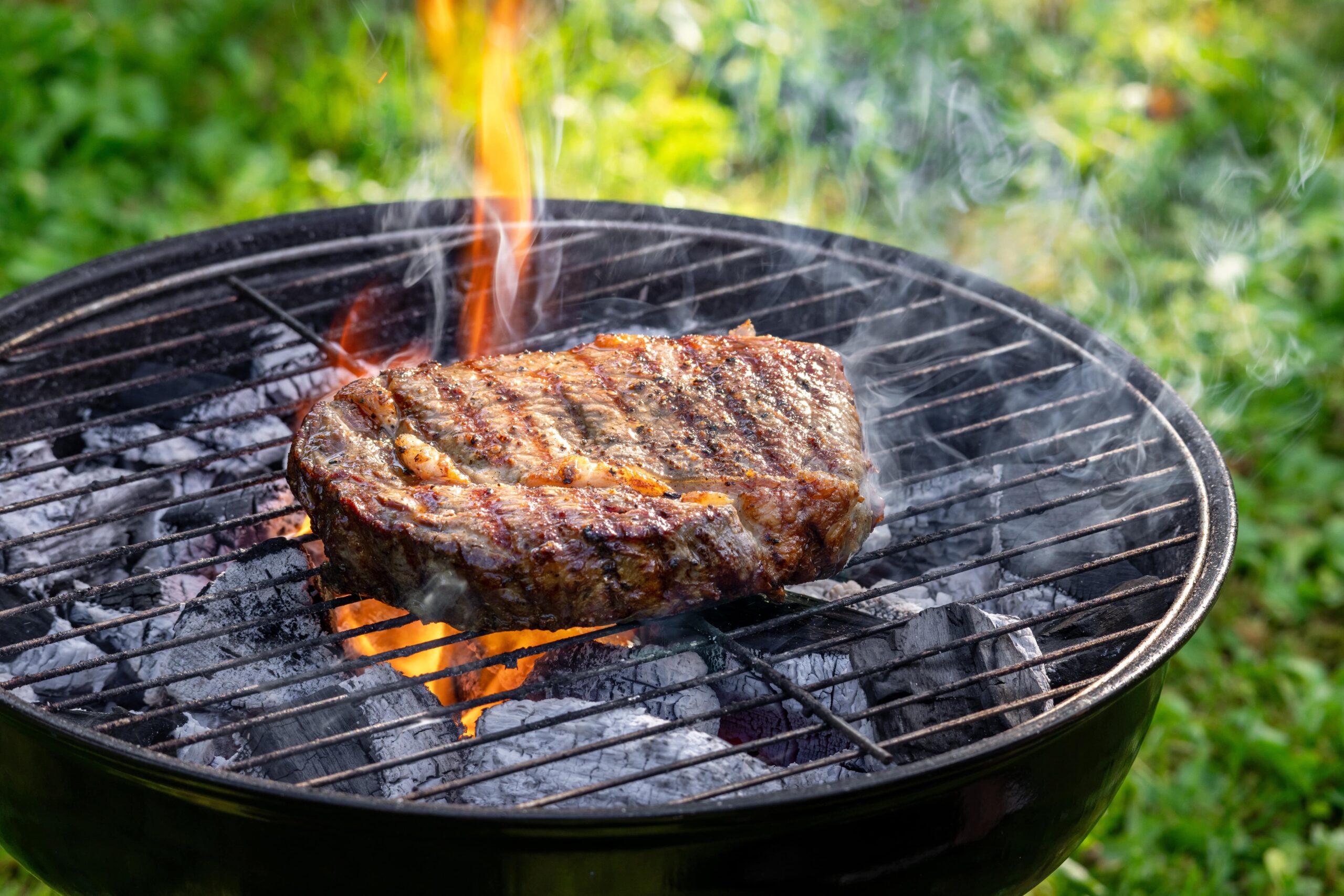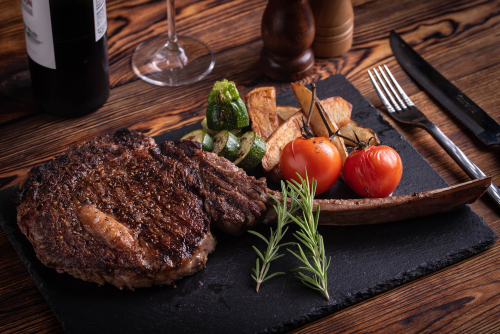At Y.O. Ranch Steakhouse in Downtown Dallas, we’re passionate about serving the highest quality beef to our guests. That’s why we choose grass-fed beef whenever possible. Not only does it taste better, but it’s also better for the environment and your health.
What Is Grass-Fed Beef?
Grass-fed beef comes from cattle raised on a diet of natural grasses and forages, as opposed to grain-fed cattle raised in feedlots on a diet of corn and soy. This difference in diet has a significant impact on the nutritional profile and environmental impact of the beef.
Environmental Benefits of Grass-Fed Beef
Reduced Greenhouse Gas Emissions
Cattle raised on pasture have a lower carbon footprint than those raised in feedlots. This is because grass-fed cattle produce less methane, a potent greenhouse gas that contributes to climate change. Additionally, their grazing helps sequester carbon in the soil, further reducing their environmental impact. Pasture-based systems also tend to require less fossil fuel input for production compared to intensive feedlot operations.
Improved Soil Health
Grass-fed cattle play a crucial role in improving soil health through their grazing patterns. Their hooves aerate the soil, allowing for better water infiltration and oxygenation. Their manure acts as a natural fertilizer, enriching the soil with essential nutrients. This natural process promotes healthy plant growth, increases soil organic matter, and enhances carbon sequestration, leading to more fertile and resilient land.
Reduced Reliance on Pesticides and Herbicides
Grass-fed cattle don’t require the same level of pesticide and herbicide use as grain-fed cattle. Grain production often relies heavily on these chemicals to maximize yields. In contrast, well-managed pastures require fewer chemical inputs, reducing the risk of chemical runoff into waterways and promoting a healthier ecosystem. This helps protect water quality and biodiversity.
Promotes Biodiversity
Grass-fed cattle grazing helps promote biodiversity by creating a diverse habitat for plants, insects, and wildlife. Pastures support a wider variety of plant species compared to monoculture grain fields, providing habitat and food sources for various insects, birds, and other animals. This contributes to a richer and more balanced ecosystem.
Health Benefits of Grass-Fed Beef
Higher in Omega-3 Fatty Acids
Grass-fed beef is a good source of omega-3 fatty acids, which are essential for heart health and brain function. These healthy fats help reduce inflammation, lower the risk of heart disease, and support cognitive function.
Lower in Saturated Fat
Grass-fed beef is naturally leaner and lower in saturated fat than grain-fed beef, making it a healthier choice for your heart. Lower saturated fat intake can help reduce cholesterol levels and decrease the risk of cardiovascular disease.
Higher in Vitamins and Minerals
Grass-fed beef is a good source of vitamins A and E, as well as minerals like iron and zinc. These nutrients are essential for maintaining healthy vision, boosting the immune system, and supporting overall well-being.
Free of Hormones and Antibiotics
Grass-fed cattle are typically raised without the use of hormones and antibiotics, making the beef a healthier and more natural choice. This reduces the risk of exposure to potentially harmful hormone residues and antibiotic-resistant bacteria.
How to Choose Grass-Fed Beef
When shopping for grass-fed beef, look for these labels:
American Grass-Fed Association (AGA): This certification ensures the cattle were raised on a 100% grass-fed diet and meet strict animal welfare standards.
Certified Grass-Fed: This USDA-approved label ensures the cattle were raised on a diet of grass and forage and were not confined to feedlots.
Cooking with Grass-Fed Beef
Grass-fed beef can be cooked in the same way as grain-fed beef, but it may require slightly different cooking times due to its lower fat content. We recommend cooking grass-fed beef to medium-rare or medium to ensure it stays juicy and flavorful. Be sure to use lower cooking temperatures and monitor the internal temperature closely to avoid overcooking.
Grass-Fed Beef FAQ
Q: Is grass-fed beef more expensive?
Yes, grass-fed beef is typically more expensive than grain-fed beef due to the higher cost of raising cattle on pasture. However, we believe the environmental and health benefits are worth the extra cost. Grass-fed beef represents a commitment to sustainable and ethical practices that prioritize animal welfare and environmental stewardship.
Q: Where can I buy grass-fed beef?
You can find grass-fed beef at most grocery stores and butcher shops. Look for labels like “American Grass-Fed Association” or “Certified Grass-Fed.” You can also find grass-fed beef at farmers’ markets and through online retailers specializing in sustainable meat.
Q: What are the best cuts of grass-fed beef?
Some of our favorite cuts of grass-fed beef include ribeye, New York strip, and tenderloin. These cuts are known for their flavor and tenderness. Other great options include sirloin, flank steak, and skirt steak, which are perfect for grilling or stir-frying.
Q: How should I store grass-fed beef?
Store grass-fed beef in the refrigerator for up to three days or freeze for longer storage. When freezing, wrap the beef tightly in plastic wrap or freezer paper to prevent freezer burn. Proper storage helps maintain the quality and freshness of the beef.
Y.O. Ranch Knows Beef | We’re Committed to Your Enjoyment
At Y.O. Ranch Steakhouse, we’re committed to serving our guests the best possible dining experience. That’s why we choose grass-fed beef whenever possible. We believe it’s a healthier, more sustainable choice that benefits both our guests and the planet. By choosing grass-fed beef, we support responsible farming practices, prioritize animal welfare, and contribute to a healthier food system.
Visit Y.O. Ranch Steakhouse in Downtown Dallas today to experience the delicious taste of our grass-fed beef. We offer a wide variety of cuts and preparations to suit every taste. Our expert chefs are passionate about showcasing the unique flavors of grass-fed beef in dishes that are both delicious and sustainable.




